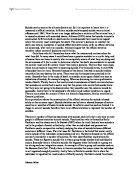So as pointed out above the construction of the official statistics for suicide is based solely on the coroners report. Suicide statistics can be bias or skewed because of certain countries or societies attitudes towards suicide. In catholic countries such as Ireland it is illegal to commit suicide therefore there is no official statistics to represent the number of suicides.
There are a number of theories associated with suicide, each with their own view on why people in different societies commit suicide. Functionalism who is fronted by Emile Durkheim and his classic work Le Suicide (1897) where he tried illustrate how suicide is really the product of social collectively, rather than an individual and personal act. Durkheim used a comparative method, studying the rates of suicide between different societies at different times. The vital issue for Durkheim is the belief that social reality exists outside of the individual consciousness and will. Durkheim focused on the official coroner’s records for a number of societies. He then identified four explanations for suicide. These are Egoistic suicide this is where group bonds weaken and individuality occurs. Secondly there is Altruistic suicide this happens when the bonds in a group are too strong and over integration occurs. An example of this is group cult suicides such as the Heavens Gate Cult. Thirdly there is Anomic suicides this occurs when the individual is not regulated enough by society. Lastly there is Fatalistic suicide this is when the individual is regulated too much and are stifled by society. Durkheim stated three basic points to show the pattern of suicide. The first was ‘suicide rates remain remarkably constant within cultures over time’. Secondly is that ‘different countries have different suicide rates’. Lastly that ‘suicide rates vary within certain social groups within countries. There are other functionalist theories of suicide these include the work of Halbwachs (1930) he suggested that Urbanisation was the key variable in determining social integration because city life was characterised by isolation and impersonal relationships.
Prior to the work of Durkheim there was the pre-sociological views of suicide these theories sought to explain patterns of suicide through reference to the following, biological factors which such as radical heredity and predisposition. Psychological factors such as a mental illness was also used as an explanation for suicide. Lastly meteorological and cosmic factors such as climate, temperature and the movements of the planets. Another theory is the interpretivist Douglas (1967) contends that suicide rates reflect the different cultural meanings attached to suicidal action in any particular society.
The Work of Steve Taylor (1988) is important because he tries to combine Durkheimian and Interpretivist approaches. He suggests that social structure is important because it brings about levels of certainty and uncertainty in people’s lives.
Other problems with suicide statistics are that they try to predict how more likely a particular group in society is to commit suicide. For example the group with the highest risk of suicide are psychiatric patients 4 weeks after discharge their risk is an estimated 100-200 more times likely to commit suicide compared with the general population. This could suggest a problem, because many psychiatric patients are on medication and obviously suffering from a major problem. Perhaps the reason for the amount of suicides is the lack of care given to the patient’s in their most needy time.
Second to this is the sex of those who commit suicide thought many statistics there is an obvious trend. The trend is that more men than women commit suicide and over the last 30 years both numbers have considerably reduced though in certain age groups there have been substantial increases and decreases. For example in 1962 the number of 15-24 year old males committing suicide was just under 40 per 100,000. The number of 65+ males committing suicide in 1962 was 5 per 100,000. These figures changed dramatically in some cases in 36 years. The figure for male suicides aged 15-24 dropped to 17 per 100,000. Compared with a rise in suicides in the 65+age bracket, which went up to just over 10 per 1000,000 in 1998.
To conclude there are many problems with official statistics and suicide. But all the problems come down to two main points. Firstly there is the coroner’s decision and if there is one factor, which is inconclusive, the coroner may give a verdict of accidental death, when it is quite obvious that it is suicide. The second point comes down the person who committed suicide no one except them knows whether it was meant to happen or just a cry for help. Finally to point out that no matter how many research studies are undertaken or how many statistics there are each case will always be individual and the reason unknown to the outside society.







